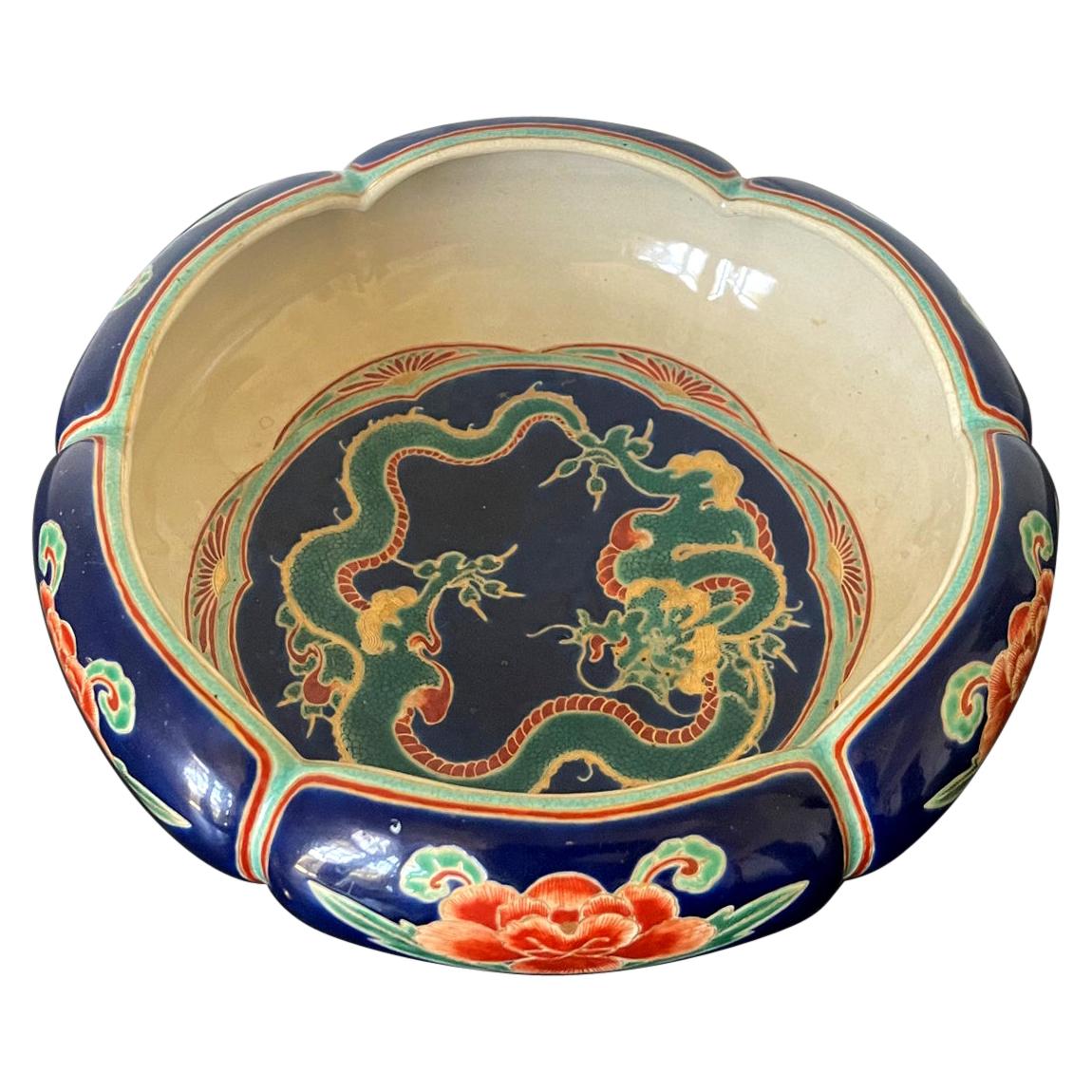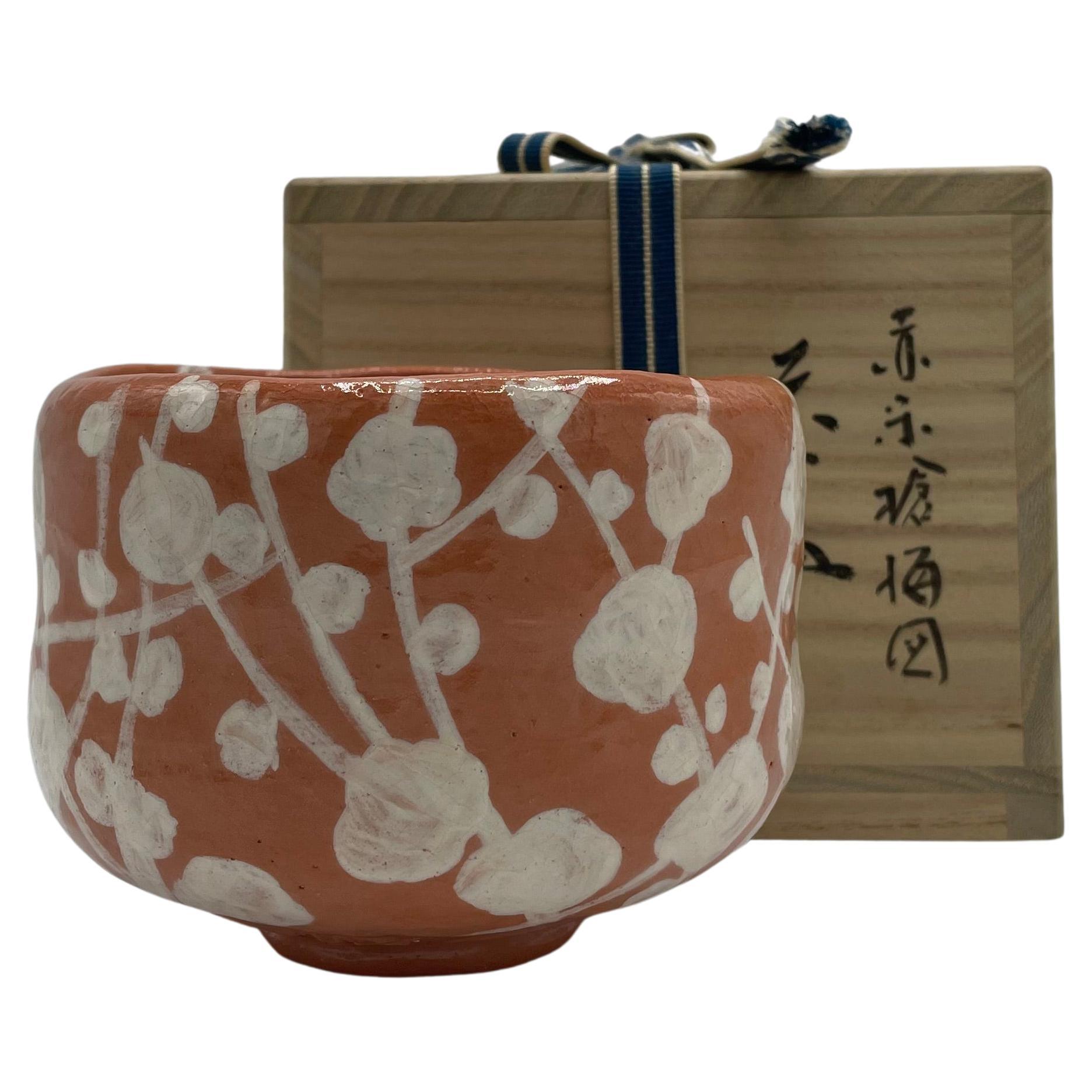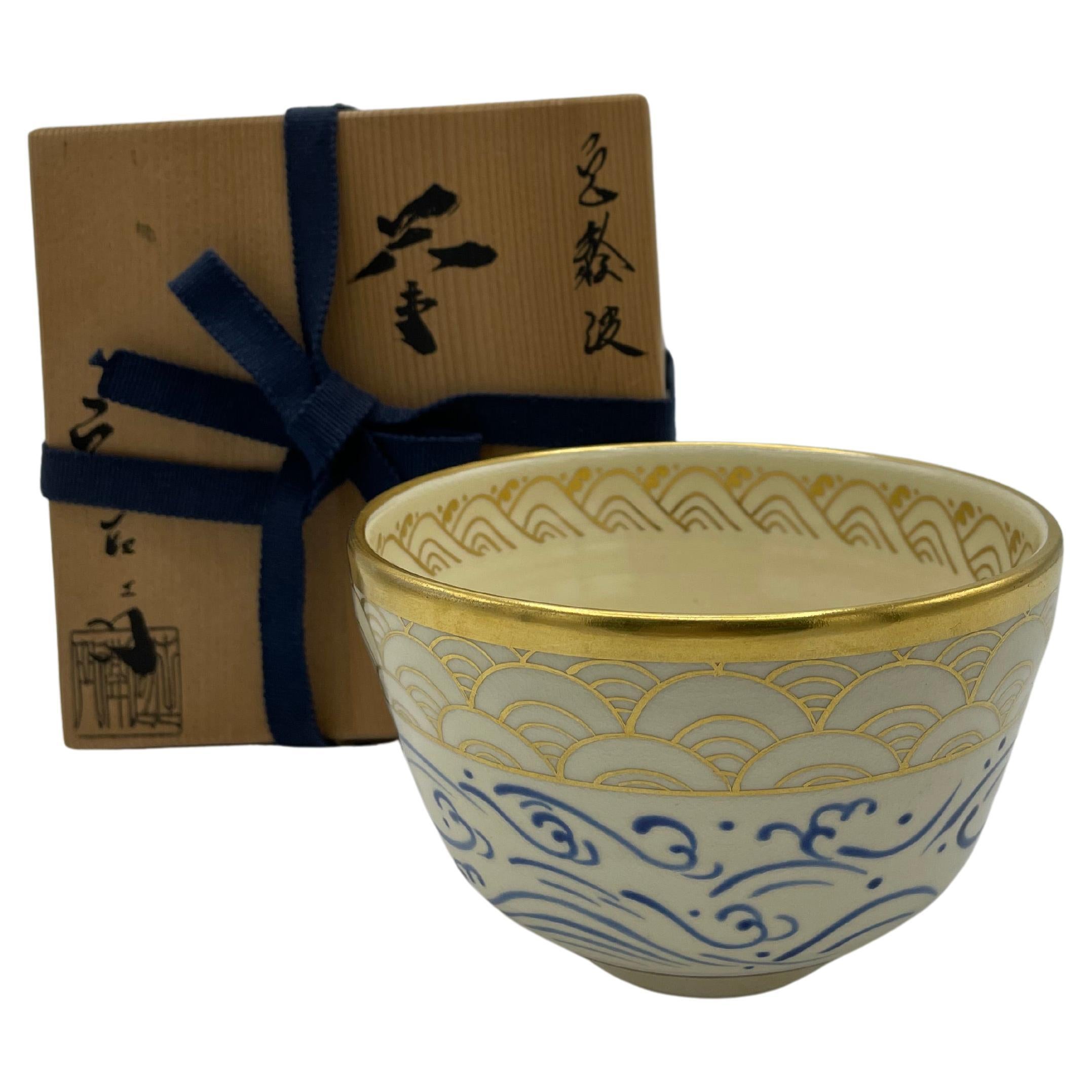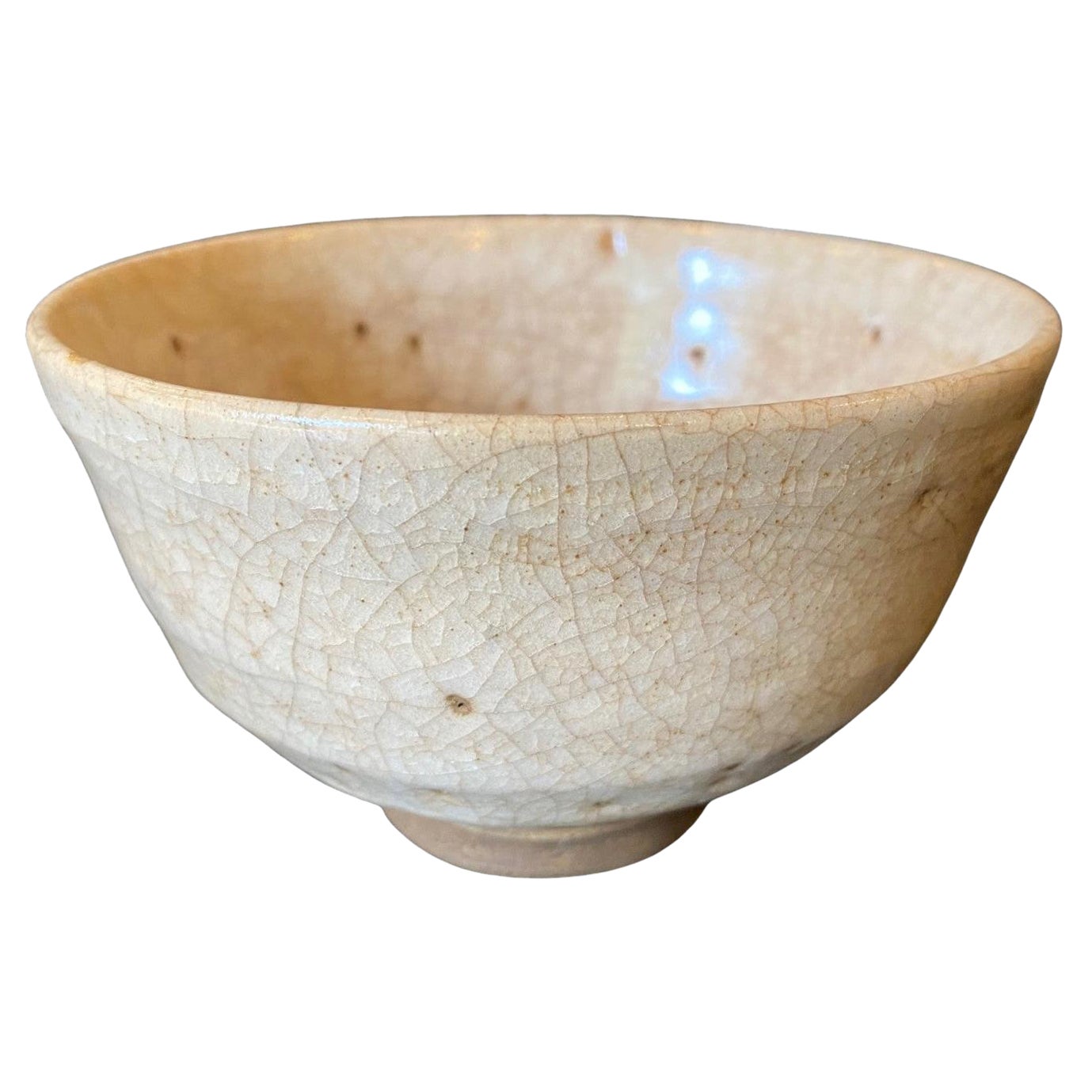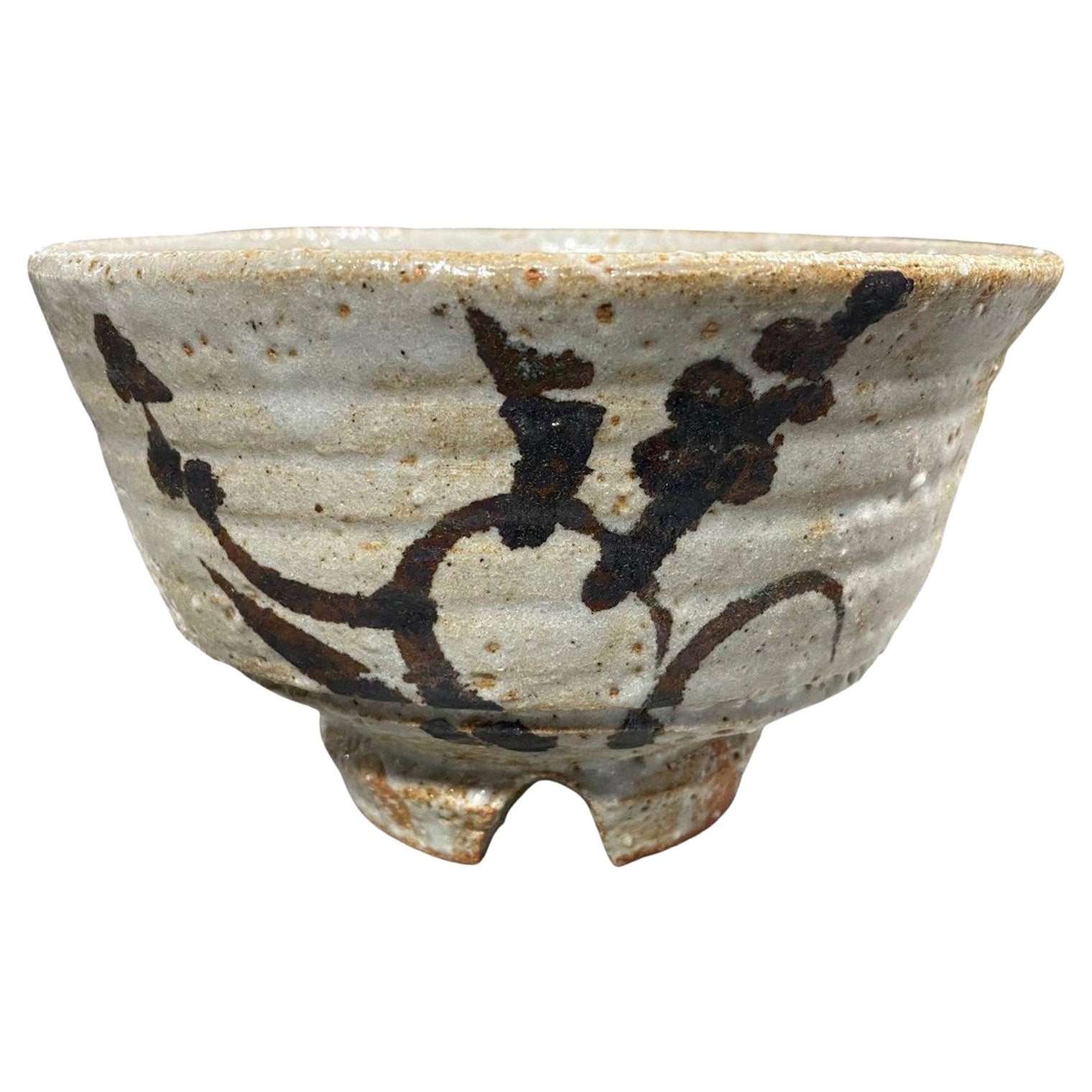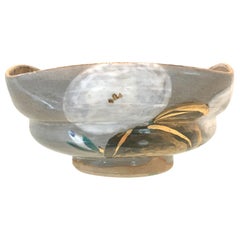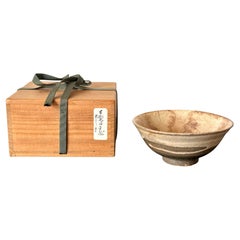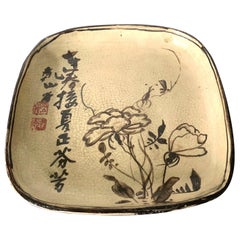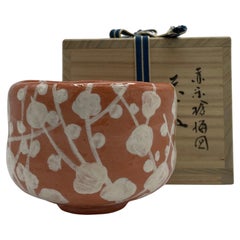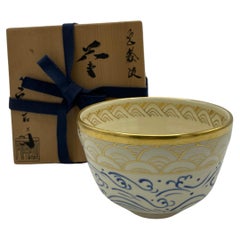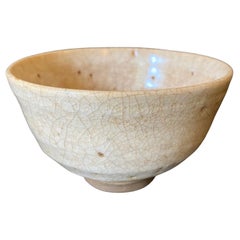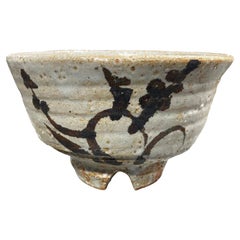Items Similar to Rare Published Japanese Ceramic Bowl Makuzu Kozan with Original Inscribed Box
Want more images or videos?
Request additional images or videos from the seller
1 of 19
Rare Published Japanese Ceramic Bowl Makuzu Kozan with Original Inscribed Box
$12,000
£9,174.64
€10,567.33
CA$16,815.68
A$18,773.12
CHF 9,836.84
MX$229,801.47
NOK 124,927.90
SEK 117,791.15
DKK 78,865.07
Shipping
Retrieving quote...The 1stDibs Promise:
Authenticity Guarantee,
Money-Back Guarantee,
24-Hour Cancellation
About the Item
A rare published glazed ceramic bowl with surface paint decoration by Japanese imperial potter Makuzu Kozan ((1842–1916) with its original inscribed tomobako storage wood box. Unlike the better-known works Kozan made for the expositions in the west and export to the foreign market, this piece exemplifies his work for the domestic market and specifically, the tea ceremony. The bowl was made in the so called "Utusushi" Ogata Kenzan (1663-1743), a celebrated Edo painter and ceramicist. Utusushi is loosely translated as "in the spirit of". It is not at all a simple imitation of a master, but a Japanese concept of embracing the spiritual essence of a master while the creator is free to mix in his or her own unique artistic interpretation and flavor.
The bowl was made to hold sweet cakes during the tea ceremony. It has a very distinguished form with a circular swelled lower body morphing into a square upper portion that further opening with flared rim. The surface has a distinct glaze pattern partitioned diagonally in black and brown. On top, snow-covered branches of prunus flowers were painted overglaze in a poetic near-abstract fashion. Blooming in winter, prunus flower is the symbol of the season and cherished for its resistance to cold. The bowl was likely reserved for the tea ceremony during the winter months.
A white porcelain plaque with Kozan in black inlay was placed on the black glaze toward the bottom. Under the base, the bowl was further branded with two incised characters "Makuzu" as shown. The original tomobako bears ink inscription and paper slip label "Sweet Bowl". It also has a small paper label "Michael Goedhuis Y2833". Under the lid, it was inscribed in ink Kanji "By special request. Snow on a clear sunny morning. Makuzu Kozan Made it" together with a red seal from the artist.
The piece was published in the book: Bridging East and West: Japanese Ceramics from Kozan Studio: Selection from the Perry Foundation. Ashmolean Musuem".
- Creator:Makuzu Kozan (Artist)
- Dimensions:Height: 3.4 in (8.64 cm)Diameter: 8 in (20.32 cm)
- Style:Meiji (Of the Period)
- Materials and Techniques:
- Place of Origin:
- Period:1900-1909
- Date of Manufacture:1890-1910
- Condition:Wear consistent with age and use. Fine antique condition, minor shelf wear only. Box is old and has lots of wear.
- Seller Location:Atlanta, GA
- Reference Number:1stDibs: LU945040442692
About the Seller
4.9
Platinum Seller
Premium sellers with a 4.7+ rating and 24-hour response times
Established in 2006
1stDibs seller since 2010
564 sales on 1stDibs
Typical response time: <1 hour
- ShippingRetrieving quote...Shipping from: Atlanta, GA
- Return Policy
Authenticity Guarantee
In the unlikely event there’s an issue with an item’s authenticity, contact us within 1 year for a full refund. DetailsMoney-Back Guarantee
If your item is not as described, is damaged in transit, or does not arrive, contact us within 7 days for a full refund. Details24-Hour Cancellation
You have a 24-hour grace period in which to reconsider your purchase, with no questions asked.Vetted Professional Sellers
Our world-class sellers must adhere to strict standards for service and quality, maintaining the integrity of our listings.Price-Match Guarantee
If you find that a seller listed the same item for a lower price elsewhere, we’ll match it.Trusted Global Delivery
Our best-in-class carrier network provides specialized shipping options worldwide, including custom delivery.More From This Seller
View AllRare Japanese Ceramic Glazed Bowl Makuzu Kozan Meiji Period
By Makuzu Kozan
Located in Atlanta, GA
On offer is a rare ceramic bowl with overglazed design by the famed Japanese ceramic artist Makuzu Kozan (1842-1916), circa 1906-1916. The bowl is rather unusual from the potter's repertoire with its unique glaze colors and decoration, and it likely belonged to a small series that Kozan made in and after 1906. A bowl of similar glaze and nearly identical dragon motif was recorded as a diplomatic present to the British royalty Arthur Connaught (1883-1932) when he represented King Gorge V in Japan in 1906. Other pieces, such as this bowl, were likely made with similar materials and designs afterwards.
Essentially round in form, the bowl has a generous volume with six harmonious lobes. The bottom of the interior showcases a coiled dragon in red, green and gold slithering on a cobalt blue background. The roundel shares an echoing lobed perimeter, which is further outlined by red and turquois bands and rising sun design. The exterior of the bowl features six stylized Japanese camellias...
Category
Antique Early 1900s Japanese Japonisme Ceramics
Materials
Ceramic
Japanese Ceramic Bowl Makuzu Kozan Utusushi Kenzan
By Makuzu Kozan
Located in Atlanta, GA
A rare ceramic bowl with overglaze paint decoration by Japanese imperial potter Makuzu Kozan ((1842–1916). Unlike the better-known works Kozan made for the expositions in the west and export to the foreign market, this piece exemplifies his work for the domestic market and the tea ceremony. The bowl was made in the so called "Utusushi" Ogata Kenzan (1663-1743), a celebrated Edo painter and ceramicist. Utusushi is loosely translated as "in the spirit of". It is not at all a simple imitation of a master, but a Japanese concept of embracing the spiritual essence of a master while the creator is free to mix in his or her own unique artistic interpretation and flavor.
The bowl was made to hold fruits during the tea ceremony. It has a very distinguished form with a circular lower body morphing into a square upper portion that further opening with flared rim. The surface has a grey glaze onto which Asagao flowers (Japanese morning glory) on the vines were painted in a free and poetic style. White was used for the petals, green for the leaves with touches of gold highlight. Asagao, the symbol of the summer was rendered in the spirit of Ogata Kenzan, and interestingly the shape of the blossom echoes the unique form the bowl. It was likely reserved for the tea ceremony during the summer months.
Under the base, Kozan was signed in black on a white porcelain plaque inlay.
For two similar examples of Kozan's work Utusushi Kenzan, see Page 168-169 of the book: Sekai ni Aisa Reta ya Kimono Miyagawa Kozan Makuzu...
Category
Antique Early 1900s Japanese Japonisme Ceramics
Materials
Ceramic
Korean Buncheong Ceramic Tea Bowl with White Slip Glaze Joseon Dynasty
Located in Atlanta, GA
An early ceramic tea bowl (chawan) from Korean dated to 16th century of the Joseon Dynasty. The gracefully potted and glazed bowl was made in the shape of Katade (Strong Hand) which ...
Category
Antique 16th Century Korean Other Ceramics
Materials
Ceramic
Japanese Ceramic Dish Meiji Ogata Kenzan
Located in Atlanta, GA
A Japanese ceramic shallow dish in square form with rounded corners from Meiji period in the style of Ogata Kenzan. The dish features a cream color crackl...
Category
Antique 19th Century Japanese Meiji Ceramics
Materials
Ceramic
Japanese Oribe Glazed Stoneware Dish by Kitaoji Rosanjin
By Rosanjin Kitaoji
Located in Atlanta, GA
An oribe stoneware square dish with four notched corners and up-turned edges made by Kitaoji Rosanjin (1883-1959) circa 1950s. The Mingei style dish h...
Category
20th Century Japanese Modern Ceramics
Materials
Ceramic
Japanese Glazed Kyo-yaki Tea Bowl Nin'ami Dohachi Edo Period
Located in Atlanta, GA
A Japanese chawan (tea bowl) of Kyo-yaki (Kyoto ware) attributed to Nin'ami Dōhachi, also known as Takahashi Dōhachi (1783–1855). Potted sensitively wi...
Category
Antique 19th Century Japanese Edo Decorative Bowls
Materials
Ceramic
You May Also Like
Japanese Matcha Tea Ceremony Bowl Rakuyaki 2000s Heisei Yoshimura Rakunyu
Located in Paris, FR
This is a tea bowl for matcha.
It was used to use during tea ceremony.
This bowl is made with porcelain and it will come with a wooden box.
This bowl was made with style Raku (Raku yaki...
Category
1990s Japanese Decorative Bowls
Materials
Porcelain
Japanese Antique Matcha Bowl Kyo Ware Oshikoji Wave 1980s
Located in Paris, FR
This is a matcha bowl which we use for tea ceremony.
This bowl was made around 1980s in Showa era in Japan.
The style of this bowl is Oshikoji. It is one of the style of Kyo yaki.
...
Category
Vintage 1980s Japanese Showa Ceramics
Materials
Porcelain
Shinbei Sakakura X (10th) Japanese Hagi Yaki Ware Pottery Chawan Tea Bowl & Box
Located in Studio City, CA
A wonderfully hand crafted and beautifully glazed Hagi Yaki Ware Chawan tea bowl by the 10th Shinbei Sakakura (X). This piece has quite a special feel to it. The Chawan radiates i...
Category
Antique Mid-19th Century Japanese Edo Ceramics
Materials
Pottery, Stoneware
Rosanjin Kitaoji Signed Shino Ware Chawan Tea Bowl Original Sealed Signed Box
By Rosanjin Kitaoji
Located in Studio City, CA
An absolutely gorgeous Shino ware pottery Chawan tea bowl by Japanese master potter Kitaoji Rosanjin (1883-1959) who was arguably one of if not the gr...
Category
Mid-20th Century Japanese Showa Ceramics
Materials
Ceramic
Ogata Kenzan Signed Japanese Edo Pottery Hand Painted Tea Plate Tray With Box
Located in Studio City, CA
A wonderfully designed and beautifully hand painted tea ceremony tray/plate by esteemed Japanese artist and master potter Ogata Kenzan (1663-1743). Kenzan is widely considered to be...
Category
Antique 18th Century Japanese Edo Ceramics
Materials
Pottery, Paint
Japanese Porcelain Flowers Bowl Koudaiji Raku Ware 1970s
Located in Paris, FR
This is a bowl which was made with porcelain. It will come with a wooden box.
It was made in Showa era around 1970s.
It was made with style Raku (Raku ware) in Koudaiji gama.
Dimens...
Category
Late 20th Century Japanese Showa Ceramics
Materials
Porcelain
$302 Sale Price
20% Off
More Ways To Browse
Japanese Ceramics
Abstract Japanese Ceramics
Foreign Ceramic
Asian Storage Box
Japanese Labels
Seal Box
Red Ceramic Bowl
Antique Japanese Book
Antique Book Box
Antique Artist Paint Box
Asian Plaque
Black And White Ceramic Bowl
Ceramic Bowl With Lid
Japan Tea Box
Brown Japanese Ceramic Bowl
Japanese Wood Bowl
Japanese Wood Bear
Antique Mixing Bowl
